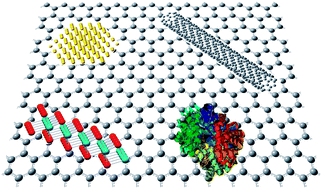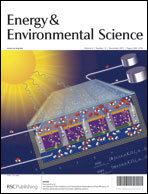Graphene-based nanocomposites: preparation, functionalization, and energy and environmental applications
Abstract
Graphene, a two-dimensional carbon sheet with one atom thickness and one of the thinnest materials in universe, has inspired huge interest in physics, materials science, chemistry and biology. However, pure graphene sheets are limited for many applications despite their excellent characteristics and scientists face challenges to induce more and controlled functionality. Therefore graphene nanocomposites or hybrids are attracting increasing efforts for real applications in energy and environmental areas by introducing controlled functional building blocks to graphene. In this Review, we first give a brief introduction of graphene's unique physical and chemical properties followed by various preparation and functionalization methods for graphene nanocomposites in the second section. We focus on recent energy-related progress of graphene nanocomposites in solar energy conversion (e.g., photovoltaic and photoelectrochemical devices, artificial photosynthesis) and electrochemical energy devices (e.g., lithium ion battery, supercapacitor, fuel cell) in the third section. We then review the advances in environmental applications of functionalized graphene nanocomposites for the detection and removal of heavy metal ions, organic pollutants, gas and bacteria in the fourth section. Finally a conclusion and perspective is given to discuss the remaining challenges for graphene nanocomposites in energy and environmental science.


 Please wait while we load your content...
Please wait while we load your content...